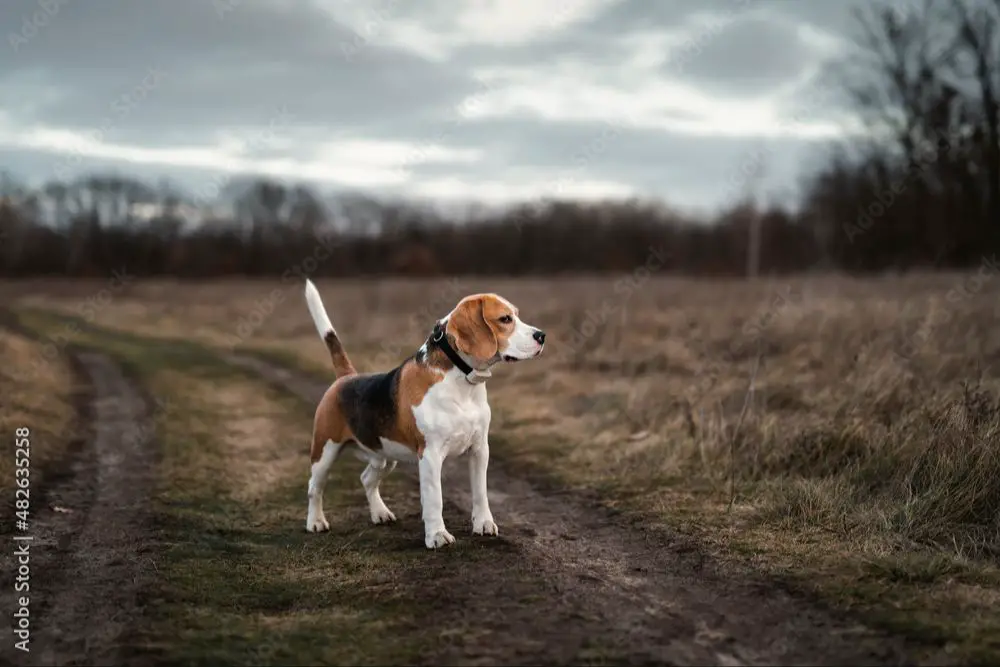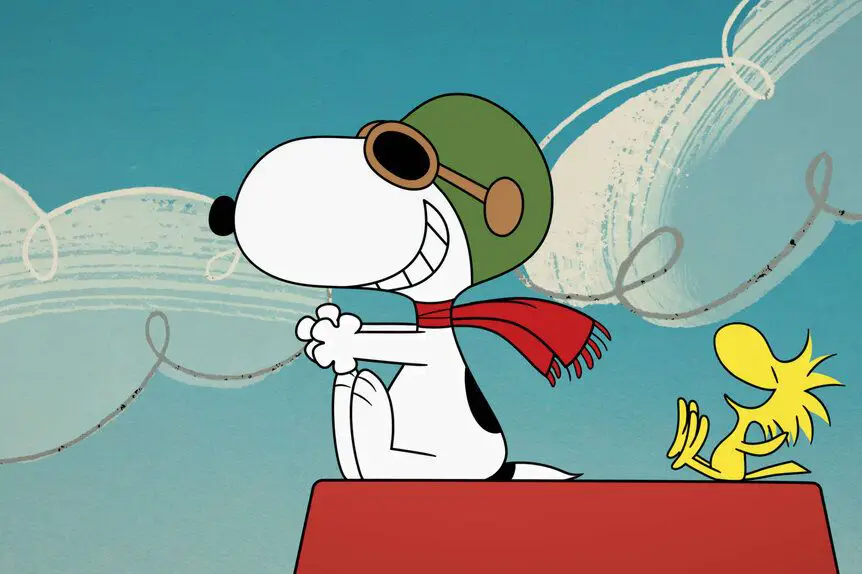Introduction
The John Wick movie series follows the story of the eponymous character, a legendary hitman who comes out of retirement to track down the gangsters that killed his dog and stole his car. The first film, released in 2014, introduces former assassin John Wick (played by Keanu Reeves) who retired after marrying Helen, the love of his life. Helen dies of a terminal illness, leaving John with a Beagle puppy named Daisy to help him grieve.
When a Russian gangster’s punk son breaks into John’s home, steals his vintage Mustang, and kills Daisy, John is heartbroken. He sets out on a vengeful rampage to hunt down the criminals who took away his last gift from his dead wife.
The dog is the emotional motivation that propels the action of the first John Wick movie. Daisy represents John’s last connection to his wife and his previous life. When Daisy is killed, John’s grief and rage push him back into the violent world he had left.
Daisy the Beagle
The film opens with John Wick’s wife gifting him an adorable beagle puppy named Daisy, shortly before she passes away from a terminal illness. Daisy becomes John’s loyal companion and the last remainder of his wife’s love. She accompanies John everywhere, riding happily along in his vintage Mustang. One fateful day, Daisy is brutally killed by Iosef Tarasov and his henchmen when they break into John’s house, prompting the vengeance-fueled action of the first film.

Daisy was portrayed in the film by a beagle named Andy, who went on to star in other films after John Wick. But in the story, Daisy holds incredible sentimental meaning for John as his last connection to his deceased wife. Her savage murder is what ultimately pushes John back into the assassin underworld, seeking revenge against those responsible.
The Beagle Breed
The modern beagle breed has its origins in England during the 1830s and was developed from several breeds, including the Talbot Hound, the North Country Beagle, the Southern Hound, and possibly the Harrier (Beagle – Wikipedia). These early beagles were bred as pack hounds for hunting rabbits and hares by following their scent. References to small hound dogs used for hunting date back to ancient Greek and Roman texts.
The first mention of the beagle by name in English literature comes from 1475. Small hound dogs similar to the modern beagle appeared in Britain sometime before the Civil War, but it wasn’t until the 1880s that the breed was firmly established. The National Beagle Club of America was formed in 1888 and the first beagle standard was approved in that same year (Beagle History – AKC).
By the early 20th century, beagles had become popular as family pets and companion dogs. Their amiable personality and moderate size made them well-suited for households. The beagle continues to be one of the most popular breeds today according to American Kennel Club registrations.
Appearance
Beagles are small to medium-sized dogs, weighing between 18-30 pounds and standing 13-15 inches tall. They have a sturdy, compact build with a short back and muscular legs built for endurance and agility. Their coat is short, dense, and smooth to the touch in a classic tri-color of black, tan, and white. The signature feature of the beagle is its long, droopy ears which are set low on its broad head. They have a moderately domed skull, squared muzzle, and dark brown or hazel eyes. Their muzzle is straight and medium in length. Their nose is broad with large nostrils, an adaptation for tracking scents. Beagles have a “merry” expression, with their soft, pleading eyes and relaxed brows giving them a sweet, gentle look. Their body proportions and easy-going temperament are perfectly suited for hunting rabbits or trail-scenting.

According to the American Kennel Club, there are two acceptable sizes of the beagle breed – under 13 inches and between 13-15 inches. The smaller variety tend to have the classic pocket beagle build that was popular in Elizabethan England. They have a compact, small frame and shorter legs while maintaining the characteristic beagle features. The 13-15 inch modern beagle conforms to the ideal size for trailing rabbits. Female beagles are typically slightly smaller than males.
Temperament
Beagles are known for being happy, loyal, and curious dogs. They have outgoing personalities and love to be around people, which makes them great family pets.
Some common personality traits and behaviors of beagles include:
- Friendly – Beagles are very social dogs and get along well with people and other animals.
- Playful – Beagles love playing games and enjoy having fun. They have lively, energetic personalities.
- Intelligent – Beagles are smart dogs that enjoy learning and solving puzzles. They can be trained well.
- Determined – When beagles pick up a scent, they become very determined to follow it. This trait comes from their history as hunting dogs.
- Vocal – Beagles often bark or “bay” when they pick up an interesting scent. They can be quite vocal dogs.
- Curious – With their excellent sense of smell, beagles eagerly explore new sights and smells. They can sometimes wander off if their curiosity gets the better of them.
- Gentle – Beagles tend to get along very well with children thanks to their patient, gentle natures.
Overall, beagles have upbeat, affectionate personalities. Their intelligence and determination makes them fun dogs to own, but they do require training and socialization from an early age. Their curious nature means they will explore, sniff, and wander if given the chance. With proper outlets for their energy and mental stimulation, beagles make for delightful family companions.
Health
Beagles are generally a healthy and hardy breed. However, like all dogs, they are prone to certain health issues.
Some common health problems seen in Beagles include hip dysplasia, epilepsy, hypothyroidism, and chondrodysplasia (dwarfism). Cherry eye, a prolapsed third eyelid, is also sometimes seen in the breed. Beagles may also be prone to obesity if overfed.
The average life expectancy of the Beagle is 12 to 15 years, with a median of 13.5 years. According to BeaglePro, many Beagles live well into their teens. Proper care and a healthy lifestyle can help extend a Beagle’s lifespan.
Some factors that influence a Beagle’s longevity include diet, exercise, veterinary care, genetics, and avoiding obesity. Providing excellent nutrition, regular exercise, yearly vet exams, and maintaining a healthy weight are all important for a long, healthy life.
Training
Beagles are highly intelligent and energetic dogs that need consistent training and activity to thrive. While their hunting instincts make them more challenging to train than some breeds, beagles respond very well to positive reinforcement techniques. Here are some tips for successfully training a beagle:
Start training early. Begin house training your beagle puppy as young as 8 weeks old. Puppies have short attention spans but will quickly pick up commands like “sit” and “stay” through short, fun training sessions using treats or toys as rewards.

Use positive reinforcement. Beagles are very food-motivated, so use treats liberally when teaching new commands or behaviors. Praise and petting are also effective rewards. Never punish or scold a beagle, which can cause them to shut down during training.
Keep sessions short. Limit early training sessions to just a few minutes at a time. Beagles have short attention spans, especially as puppies. End each session on a positive note with lots of praise or a treat.
Be patient and consistent. Training a beagle takes time, consistency and patience. Stick to a routine, reinforce training every day, and be firm but calm when asking your beagle to obey commands.
Make it fun! Incorporate games and play into training sessions. Beagles love having fun, so adding variety will keep them engaged.
Stay active. Get lots of exercise with your beagle like long walks, runs or hikes. A well-exercised beagle is better focused during training sessions.
Use scent games. Engage your beagle’s amazing sense of smell during training by hiding treats and asking them to “find it.” This is mentally stimulating.
Consider professional help. If struggling with training, consult with a certified dog trainer, especially for help with house training, leash training, or curbing undesirable behaviors.
With patience and persistence, beagles can become well-trained companions, even with their natural hunting instincts. Starting young and making training fun and rewarding is key to success.
As Pets
Beagles make wonderful pets for families due to their friendly, affectionate temperament. According to the National Beagle Club of America, “Beagles are excellent family companions.” Their gentle demeanor and moderate energy level make them an ideal pet for households with children.
However, there are some considerations when owning a beagle as a pet. As pack animals, beagles crave companionship and do not do well when left alone for long periods of time. Their natural hunting instincts can lead some beagles to wander off in pursuit of interesting scents if not properly supervised.
Beagles can be challenging to housetrain and may require consistent positive reinforcement techniques over a long period of time. Their tendency to bark and howl requires patience as well from pet owners. Due to their high energy, beagles need daily exercise and mental stimulation to be happy and prevent destructive behaviors.
Overall, with proper care, training and attention, beagles make for delightful family pets. Their affectionate personality and moderate size make them well-suited for many households. However, potential owners should be prepared for their energetic nature and special needs like supervision and patience during training.
For more on beagles as pets, check out this guide from Pet Plan: https://www.petplan.co.uk/pet-information/dog/breed/beagle/
In Pop Culture
Beagles have become popular dogs in movies, TV shows, and other media over the years. Some of the most famous beagle characters include Snoopy from the Peanuts comic strip and animated specials, Underdog from the 1960s cartoon, and Lou from the Cats & Dogs film franchise.

Snoopy is likely the most well-known pop culture beagle. Created by Charles M. Schulz in 1950 for his Peanuts comic strip, Snoopy eventually became the star of the strip and was known for his wild imagination and hijinks. Snoopy later appeared in numerous Peanuts tv specials, films, and merchandise over the decades.[1]
Underdog, the shoeshine pup turned superhero, debuted in 1964 and went on to star in his own NBC cartoon series. With his nerdy, clumsy alter ego Shoeshine Boy and his girlfriend Sweet Polly Purebred, Underdog fought crime and evil villains. Underdog became an iconic superhero character and featured in later TV shows, films, and merchandise.[1]
More recently, the beagle Lou appeared in the 2001 film Cats & Dogs and its 2010 sequel Cats & Dogs: The Revenge of Kitty Galore as a dog spy. Lou was voiced by Tobey Maguire and worked for a secret global dog organization to protect humans from the evil plans of cats.
Conclusion
John Wick’s beloved beagle Daisy was a key part of the film’s emotional core. Her tragic death at the hands of Iosef Tarasov set the revenge plot into motion. Daisy embodied the innocent companionship and loyalty that dogs provide their owners.
Throughout the film, memories of Daisy and John’s grief over losing her underscored his relentless pursuit of vengeance. Her loss revealed a softer, emotional side to the normally stoic hitman. Daisy’s gift to John from his late wife Helen was a symbol of their love and the life they had hoped to build together.
The beagle breed in general makes for a devoted pet. Their friendly nature, moderate energy levels, and affectionate personalities have made them one of the most popular hound breeds. John Wick’s love for his dog Daisy reflected the strong bonds these dogs can form with their human families.
While fictional, Daisy highlighted the importance of dogs in people’s lives. For John Wick, she represented the last connection to his wife and his hopes for the future. Her death at the hands of a callous criminal set off a roaring rampage of revenge. But it also showed the lengths someone might go for their beloved four-legged friend.
